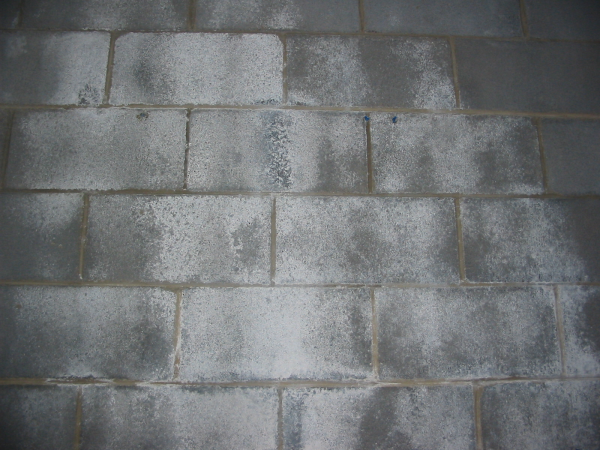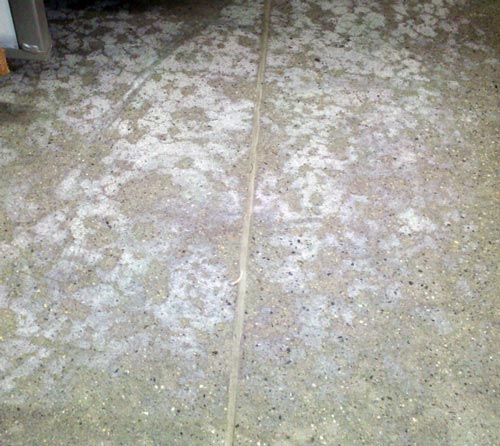Efflorescence. It’s the whitish powdery material that forms on the surfaces of masonry or concrete construction, and also it’s the white blush that can form on sealed concrete floors or concrete countertops. While it poses no threat structurally, efflorescence is an aesthetic nuisance that affects both interior and exterior concrete. This article discusses why efflorescence occurs, how it can be prevented and how to deal with it if it does happen.
There are two kinds of efflorescence: primary and secondary. Primary efflorescence occurs when concrete bleedwater dries on the surface. Secondary efflorescence occurs when soluble mineral salts are leached out of cured concrete.
Primary Efflorescence
Eliminating primary efflorescence begins before the concrete is cast, simply by using basic good concreting practices: Start with a concrete mix that uses well-graded aggregates, a low water-to-cement (w/c) ratio, and fly ash or other pozzolan as a partial cement replacement; use a water reducer to increase workability without adding extra water to the mix.
Extra water in the concrete makes it more porous, weaker, and more susceptible to shrinkage cracking. The extra water is an unwanted internal reservoir that can leach the salts out of the concrete. Concrete made with a w/c of around 0.45 will produce a strong, dense mix that’s unlikely to have excessive bleedwater.
Making good concrete is just the first step. It does no good to have a well-designed, low w/c ratio concrete if it’s not cured properly. Wet curing under burlap, plastic sheeting or curing blankets allows the concrete to gain strength and density during the critical early days after casting. Well-cured concrete inhibits water movement, and this is one important step to controlling primary and secondary efflorescence. If the concrete doesn’t allow moisture movement, the salts deep within the concrete can’t be leached out.
Secondary Efflorescence
All masonry and concrete materials are susceptible to secondary efflorescence, including concrete countertops. Secondary efflorescence is most often caused by moisture or water vapor migrating through a concrete slab, bringing soluble salts to the surface of the concrete. The amount and character of the deposits vary according to the nature of the soluble materials and the atmospheric conditions.
Concrete contains a variety of soluble mineral salts, both from the cement and from admixtures like calcium chloride, and even from chemicals applied to the concrete after it has hardened. It’s those salts that are the “seeds” of efflorescence.
While all concrete has some soluble salts in it, not all concrete will effloresce. Efflorescence will occur only if all of the following conditions exist within the concrete:
- The concrete must have soluble mineral salts within it.
- There must be moisture to dissolve the soluble salts.
- Evaporation or hydrostatic pressure must cause the mineral salt solution to move towards the concrete surface.
If any one of these conditions is eliminated, efflorescence will not occur.
Controlling secondary efflorescence is a more common problem for contractors who have “inherited” pre-existing concrete. The mix itself can’t be changed, so factors that affect water movement into and out of the concrete are where steps can be taken. Identifying and minimizing the sources of moisture are the first step. Reducing the porosity of the concrete to prevent the soluble salts from being leached out is the second step.
This second step to controlling efflorescence is to apply chemical hardeners, also known as densifiers, to existing concrete. These make the matrix less porous by generating calcium silicate hydrates that plug the pores and clog the capillaries.
Curious how repairing efflorescence plays out in a real-world scenario? Read this blog from our backlog that details an example of how to repair a concrete floor with efflorescence that was progressively worsening.



